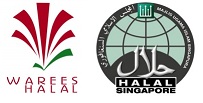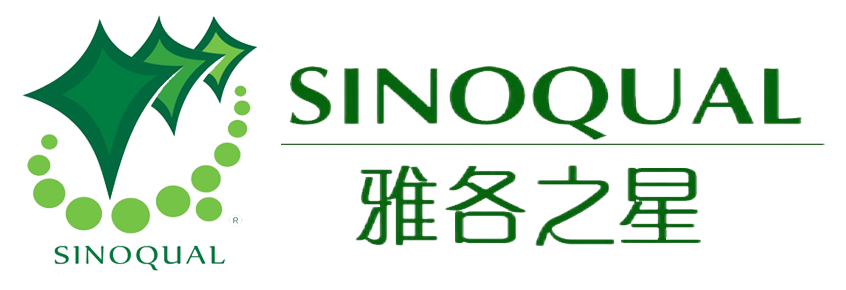The global beauty industry is undergoing a transformation as consumers increasingly demand products that demonstrate transparency, ethical sourcing, and ingredient purity...
Why are Halal certified products so popular?
2025-05-15
According to Singapore InternationalHALALCertification Department(MUIS-HALAL INTERNATIONAL)Introduction, GlobalHalalThe certification market has exceeded2.5trillion US dollars, no doubt driven by strong market forcesHalalThe food certification market has become one of the hottest in the world.HalalThe market prospect is broad. According to statistics, China's surroundingHalalThe consumer group exceeds8100 million people. See the table below for specific data:
Indonesia2100 million;
Pakistan1.8100 million;
India1.3100 million;
Bangladesh1.5100 million;
Myanmar460Ten thousand;
China2300Ten thousand;
Malay2300Ten thousand;
Kazakhstan860Ten thousand;
Kyrgyzstan340Ten thousand;
the Philippines1000Ten thousand;
Russia2600Ten thousand;
Tajikistan500Ten thousand;
Thailand800Ten thousand;
Uzbekistan2000Ten thousand;
According to the data analysis of the Global Business Strategy Council,2012YearlyHalalThe consumption amount of certified products is1.6trillion dollars,2023GlobalHalalSales of certified products will double.HalalWith the surge in sales of certified products and China's inherent geographical advantages, more and more Chinese companies are choosingHalalCertification increases competitive advantage and expands market share.
PromoteHalalMarket factors
※HalalTrade market access requirements, such as Indonesia's requirement that food, medicine, and cosmetics entering its market must pass recognizedHalalCertification and recognition.
※Global trade competition is intensifying.HalalCertified products can gain a competitive advantage in the global market
※HugeHalalConsumer market, reaching approximately19100 millionHalalconsumer groups
※HalalThe spending power of consumer groups continues to increase.HalalThe investment cost of certification is small and the potential benefits are huge.
※FormulateHalalCertification standards/The code is a commitment to quality to consumers
Thanks to the establishment of the ASEAN Free Trade Area and2013With the implementation of my country’s “One Belt, One Road” economic development initiative, my country’s economic and trade relations with ASEAN member states and countries along the Belt and Road have grown year by year.HalalThe certification market has taken advantage of the excellent trade environment of these two economies. The two major economies have jointly promoted the development of my country in the past decade.HalalThe export trade of products has been growing steadily and globallyHalalProduct markets occupy an important core economic position.
As the world's hottest economy, China willHalalThe product sales market continues to grow exponentially. When many companies see their peers rushing to chooseHalalCertification seizes the worldHalalWhen it comes to market share, there is no reason to hesitate.

MUIS-HALALInternational certification mark
A symbol of assurance and trust
Why choose Singapore InternationalHalalCertification program?
since1964Since its establishment in 2000, it has been a globally reputable certification body
Reliable based on quality and trustHalalCertification
Indonesia, Malaysia, Singapore, BruneiMEMBERSFounding member of the Unofficial Conference of Muslim Leaders
GCCThe Gulf States Free Trade Agreement's technical cooperation clauses specifyHalalCertification body.
based onISOStandardizedHalMQ-HalalThe quality system is widely adopted around the world.
A leading Singaporean official from a country with a Muslim minorityHalalCertification Body
worldwideHalalWidely recognized by the market
It has a strong international network in China, South Korea and Japan.
Normal 0 7.8 磁 0 2 false false false EN-US ZH-CN X-NONE /* Style Definitions */ table.MsoNormalTable { mso-style-name:普通设计; mso-tstyle-rowband-size:0; mso-tstyle-colband-size:0; mso-style-noshow:yes; mso-style-priority:99; mso-style-parent:""; mso-padding-alt:0cm 5.4pt 0cm 5.4pt; mso-para-margin:0cm; mso-para-margin-bottom:.0001pt; mso-pagination:widow-orphan; font-size:10.5pt; mso-bidi-font-size:11.0pt; font-family:"Calibri","sans-serif"; mso-ascii-font-family:Calibri; mso-ascii-theme-font:minor-latin; mso-low-font-family:Calibri; mso-under-theme-font:minor-latin; mso-bidi-font-family:"Times New Roman"; mso-bidi-theme-font:minor-bidi; mso-font-kerning:1.0pt;}